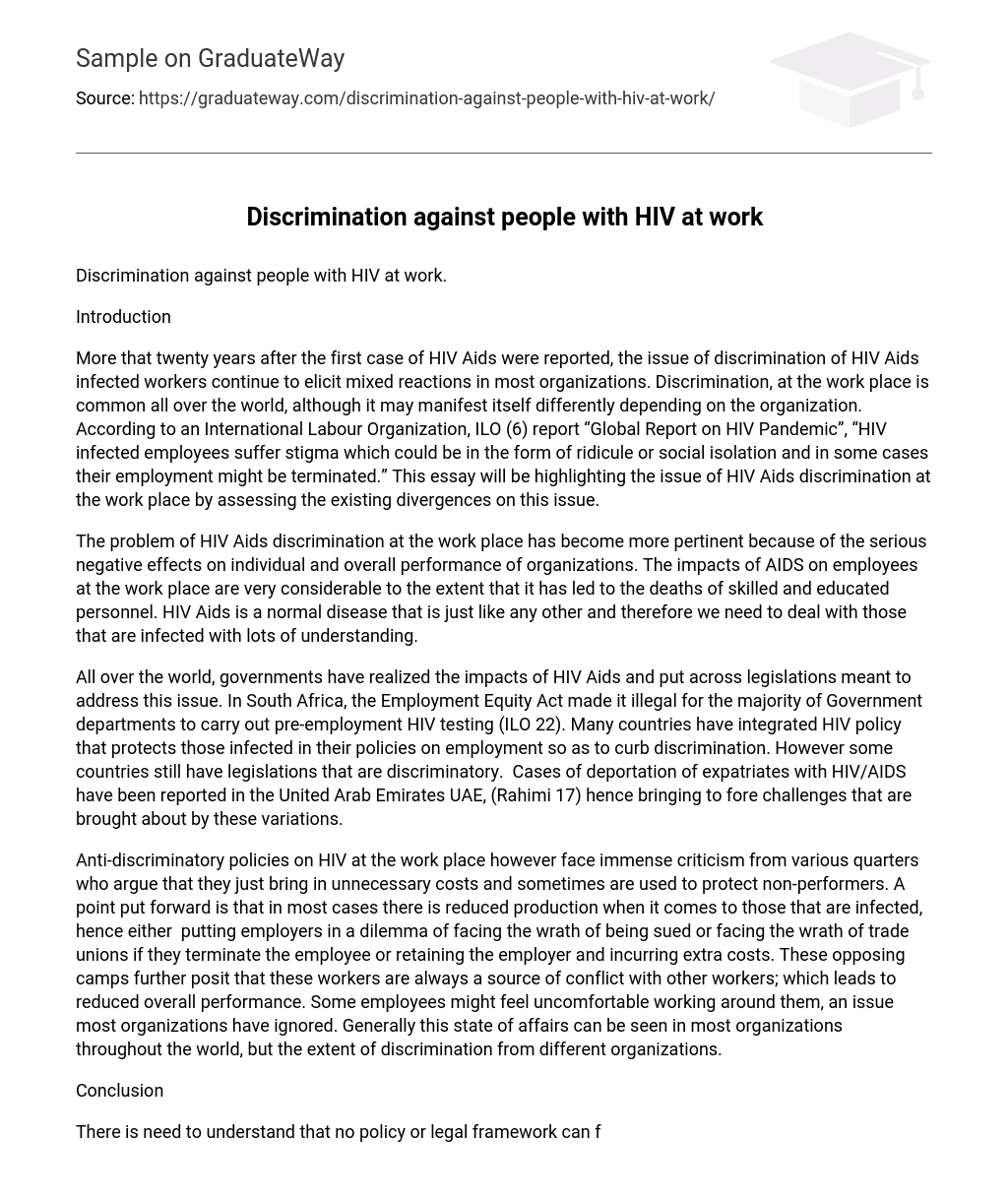Discrimination against people with HIV at work.
Introduction
More that twenty years after the first case of HIV Aids were reported, the issue of discrimination of HIV Aids infected workers continue to elicit mixed reactions in most organizations. Discrimination, at the work place is common all over the world, although it may manifest itself differently depending on the organization. According to an International Labour Organization, ILO (6) report “Global Report on HIV Pandemic”, “HIV infected employees suffer stigma which could be in the form of ridicule or social isolation and in some cases their employment might be terminated.” This essay will be highlighting the issue of HIV Aids discrimination at the work place by assessing the existing divergences on this issue.
The problem of HIV Aids discrimination at the work place has become more pertinent because of the serious negative effects on individual and overall performance of organizations. The impacts of AIDS on employees at the work place are very considerable to the extent that it has led to the deaths of skilled and educated personnel. HIV Aids is a normal disease that is just like any other and therefore we need to deal with those that are infected with lots of understanding.
All over the world, governments have realized the impacts of HIV Aids and put across legislations meant to address this issue. In South Africa, the Employment Equity Act made it illegal for the majority of Government departments to carry out pre-employment HIV testing (ILO 22). Many countries have integrated HIV policy that protects those infected in their policies on employment so as to curb discrimination. However some countries still have legislations that are discriminatory. Cases of deportation of expatriates with HIV/AIDS have been reported in the United Arab Emirates UAE, (Rahimi 17) hence bringing to fore challenges that are brought about by these variations.
Anti-discriminatory policies on HIV at the work place however face immense criticism from various quarters who argue that they just bring in unnecessary costs and sometimes are used to protect non-performers. A point put forward is that in most cases there is reduced production when it comes to those that are infected, hence either putting employers in a dilemma of facing the wrath of being sued or facing the wrath of trade unions if they terminate the employee or retaining the employer and incurring extra costs. These opposing camps further posit that these workers are always a source of conflict with other workers; which leads to reduced overall performance. Some employees might feel uncomfortable working around them, an issue most organizations have ignored. Generally this state of affairs can be seen in most organizations throughout the world, but the extent of discrimination from different organizations.
Conclusion
There is need to understand that no policy or legal framework can fully address the issue of HIV at the work place. Appropriate communication mechanisms are needed at the work place especially when it comes to confronting the fears and attitudes that continue hampering effective and sustained policies that protect employees infected with HIV Aids.
Works Cited
International Labor Organization. Global Report on HIV Pandemic Geneva: ILO, 2005
Rahimi, S. The UAE’s New Fight against HIV. New York: Penguin, 2007.





